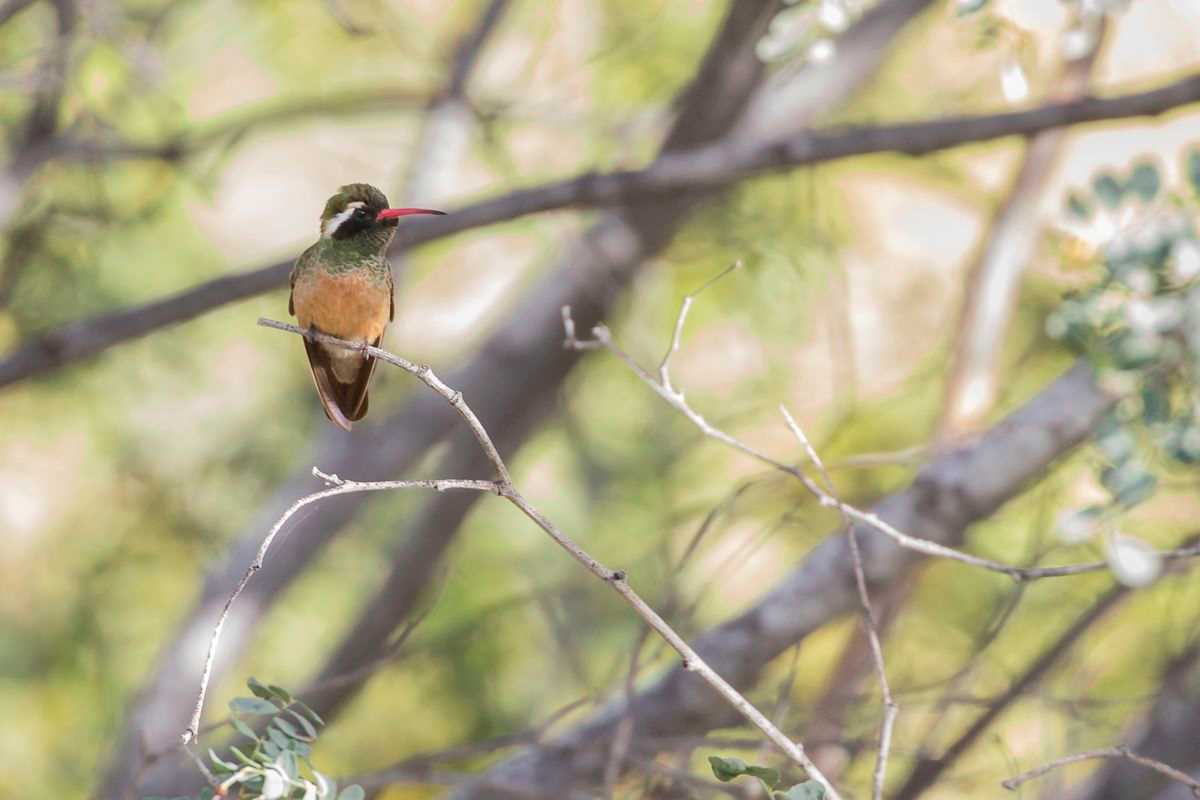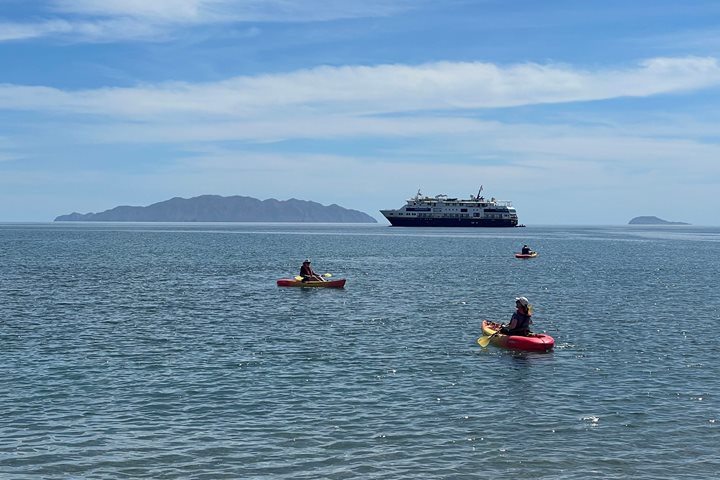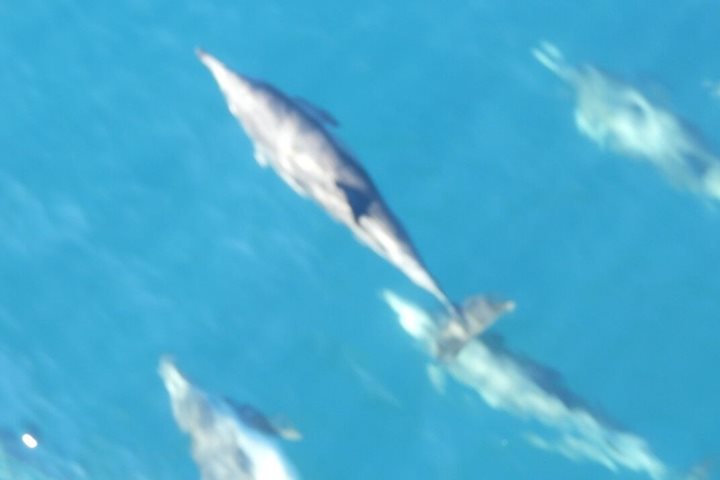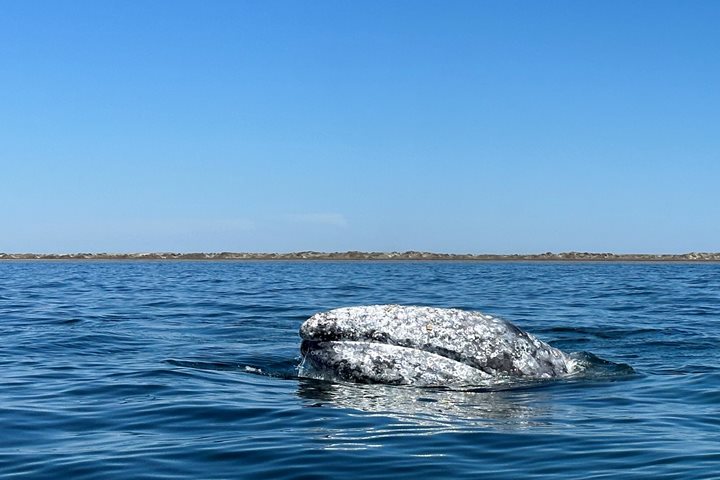Our first full day together exploring the waters around the peninsula of Baja California in Mexico’s Sea of Cortez started in a spectacular way; shortly after having enjoyed watching a glorious sunrise at sea, we spotted a tall blow. I mean a very tall blow! The very first mammal of the trip was none other than the largest animal that have ever lived on earth, the blue whale! The holy grail of whale watching presented itself off National Geographic Venture’s bow and for a long time we were able to marvel at the sheer size of the huge creature. We took many photos every time that the whale made its 30-foot-tall blow and even when a pinkish-brown stain behind it indicated when it had finished digestion. Several blue whales enter the Sea of Cortez every year and there are records of them from every month, although they are typically seen during February and March.
We continued sailing to the South and eventually arrived at our destination, Bahia Encantada, located on the Western side of San Jose Island. There we spent the afternoon having fun kayaking and hiking. San Jose Island is one the largest islands in the Sea of Cortez, and part of the network of federal protected areas in Mexico. It is relatively close to the peninsula and the plant communities there are quite complex; we admired the largest cactus in the world, the cardón, which in San Jose Island form extensive “forests.” Other cacti species were present as well, including the appropriately named “old man cactus,” the organ pipe and the barrel cactus. Trees like the palo verde, the palo blanco and the ironwood tree gave the island a less desert-like feeling. We saw several interesting bird species too, but the one that won everyone’s hearts was the Xantus’ hummingbird. Endemic to the southern half of the peninsula and present on several islands, the Xantus’ hummingbird is a gorgeous little bird with a red bill and a pronounced white eyebrow that is a very sought-after species among birders and we were lucky to admire a male that was busy visiting the flowers of an Adam’s tree and other plants around. What a great way to start our week, having seen two very iconic species!







